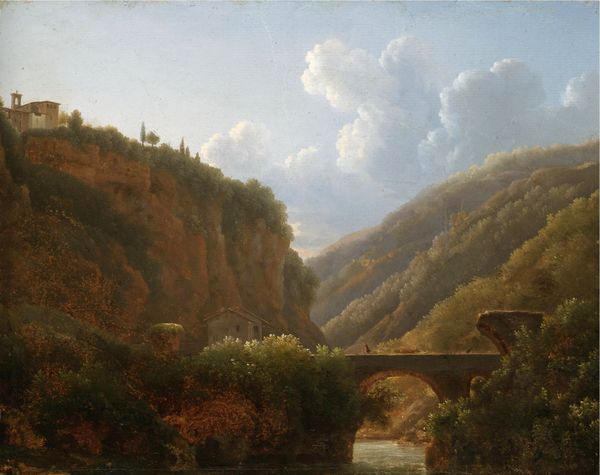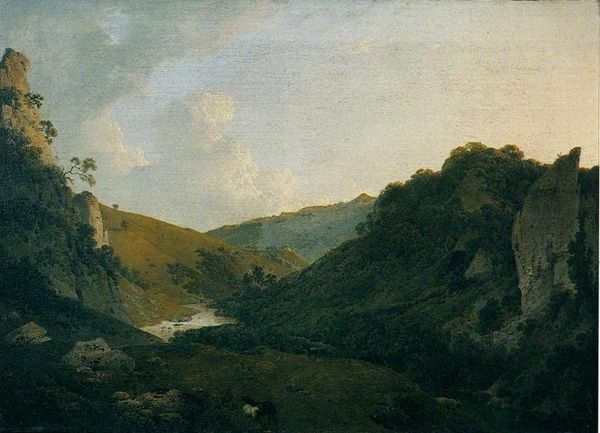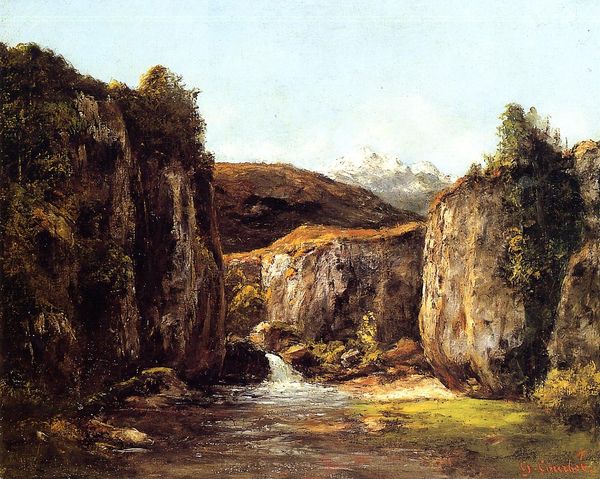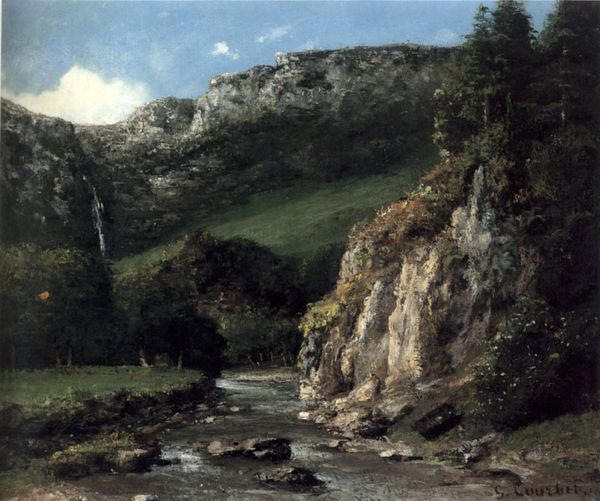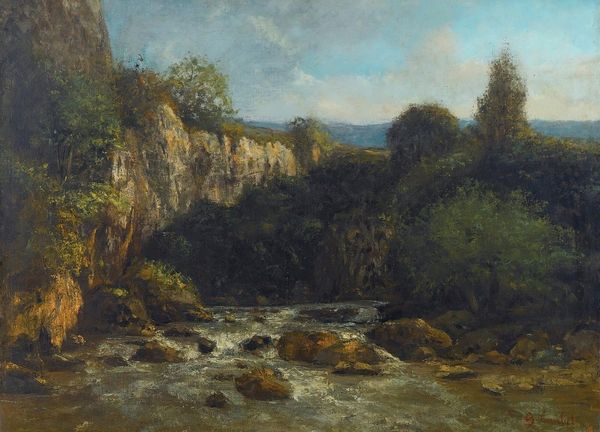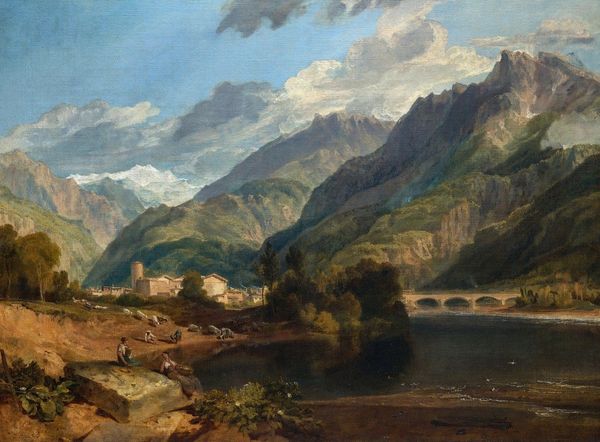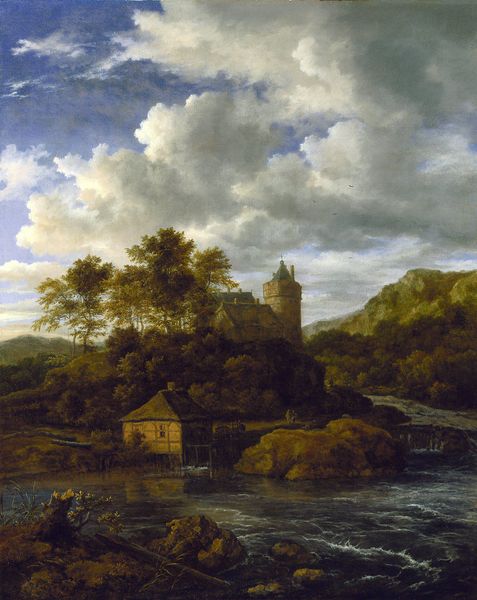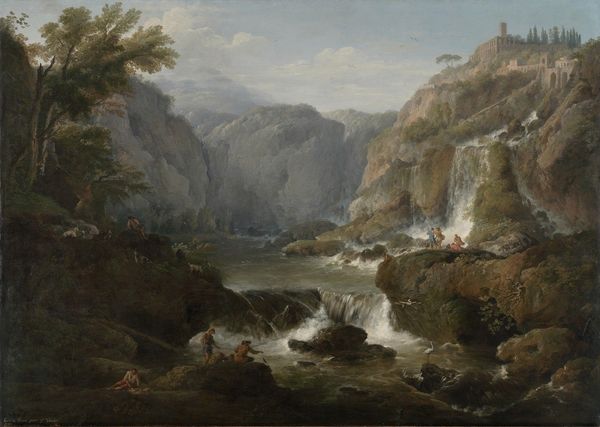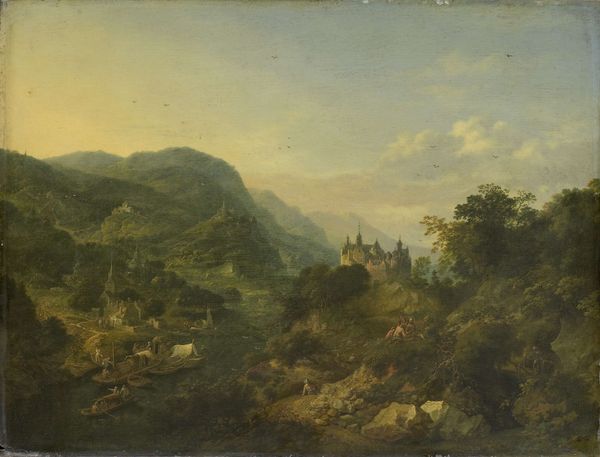
drawing, painting, plein-air, oil-paint
#
drawing
#
sky
#
painting
#
plein-air
#
oil-paint
#
landscape
#
perspective
#
romanticism
#
cityscape
#
picturesque
#
realism
Dimensions: 61 x 81 cm
Copyright: Public domain
Curator: Here we have Joseph Wright of Derby's oil-on-canvas painting, "The Cloister of San Cosimato," completed in 1789. Editor: My initial impression is one of almost unsettling tranquility. The dramatic, almost theatrical lighting certainly guides the eye, doesn't it? Curator: It does indeed. Wright employs a keen understanding of light and shadow to structure the composition, drawing our gaze towards the cloister perched precariously on the clifftop. It functions as a sort of visual anchor within the picturesque landscape. Editor: Though, what interests me just as much is how this supposed "picturesque landscape" actually presents visible labour. Look closely at the stonework of the bridge, its relationship to the road, the implication of trade, people having passed there. You can practically smell the stone dust! Curator: I see your point. While Wright’s application of perspective undeniably creates depth and immerses us in the scene, it’s the atmospheric conditions—the subtle gradations of color, the rendering of the sky—that really evoke a sense of sublime naturalism. There’s a clear attempt to capture a fleeting moment in time. Editor: I find that "fleeting moment" far more intriguing when placed into a context of late 18th-century societal infrastructure. To what end is the capturing, if not to display the spoils of that civilization to its wealthy patrons back home? Curator: I think that your interpretation runs the risk of reductionism; Wright could simply have been captivated by the dramatic juxtaposition of nature and architecture, searching to portray the spiritual significance and visual beauty he located in the Italian countryside. Editor: And the material evidence to confirm these assumptions lies, as ever, in the quality of the paint! I like to wonder: how many pigments were mixed to conjure the hues that lead us back to civilization, to an age of reason? Curator: Fair enough, to consider his hand and skill with such specific gravity only grounds my perspective on it, really. Editor: Precisely! It is rewarding to view such landscape work with the artist’s materials in mind as well as its perspective; thank you for offering the thought.
Comments
No comments
Be the first to comment and join the conversation on the ultimate creative platform.
